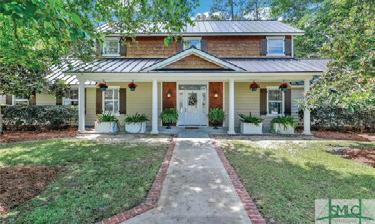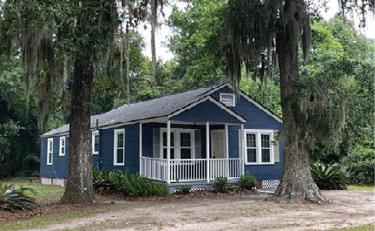
5 minute read
The Bitter End
The Shell Game
By Captain J. Gary "Gator" Hill
Advertisement
Idon’t know about y’all, but the Gator is ready for some fall, or maybe even some winter temps. Now don’t get me wrong, I love summer, but my belly loves cooler weather. Why is that, you might ask? Cooler temps bring back our oyster harvesting. From the lowcountry of South Carolina to the far southern tip of the Golden Isles, oysters have been a part of our history.
Football, beer and oyster roasts all seem to go hand-inhand. I believe our earliest residents, the Native Americans such as the Creek Nations, and even much further back, had their own versions of these activities. All along the barrier islands, huge oyster middens, those circular piles of oyster shells, are in evidence. I can’t help but think that the piles of shells were where the sports complex was. The people would sit and watch, with great interest, games like “Chunky,” and later, some version of stick ball, while drinking fermented berries or grains, and throwing down on some of the best oysters known to man. Okay, maybe I can’t support this with historical documentation, but indulge a Gator his fantasies.
So, what happened to these huge middens from that bygone era? Simple, look at our architecture and road ways. Tabby construction can be found throughout the southeast. It was made by combining lime (from burned oyster shells), water, sand, ash, and broken oyster shells. Once mixed, this slurry was poured into forms to create walls. There are many examples of early tabby construction in the area, and there’s a description of the process at Wormsloe Plantation Museum, near Isle of Hope.
Though the Spanish are commonly given credit for bringing tabby to the Americas, it is speculated that its roots may lie in the Middle East or North Africa, that it was then carried to Spain during the invasion of the Moors, and then to Florida in the 16th century. For Coastal Georgia, however, James Oglethorpe is given credit with its widespread use. After seeing tabby used frequently in Spanish-held Florida and fortifications in Port Royal Sound, he saw its value and even constructed a home of tabby for himself near Fort Frederica.
With the signing of the Treaty of Aix-la-Chapelle in 1748, the Spanish threat was removed from the southeast. Around this time tabby fell out of common use, though many of the structures were still standing proudly. The Spalding family purchased the Oglethorpe tabby home in 1771 and shortly thereafter, Thomas Spalding was born there. This same Thomas Spalding was so impressed by the tabby home he was raised in that he took this construction to Sapelo Island where he built his Sea Island plantation with what became known as “Spalding Tabby.” This sparked a revitalization of tabby use that lasted into the 1840s.
In the 1880s when Jekyll Island saw the influx of the famous “Millionaires Club,” tabby again saw a huge revival on the island, but by the 1920s, tabby had once again fallen out of favor. This was in part due to the disappearing middens that had been ravaged earlier, and the use of Portland cement.
Like many things, the use of tabby seemed to come full circle, and by the 1980s what came to be known as “Revival Tabby” was being used. Though not made in the time-honored way, this new tabby is made by adding oyster shells to Portland cement by hand tossing the shells into the still-wet mortar layers, giving it a pseudo-tabby look.
Well guys and gals, that’s about it for me this week. Time to go fight the sun and dream about cool weather and oysters.
Till our wakes cross again, peace and love and shrimp and grits. I’ll see you on the water!
FEATURED 2521 Norwood Ave
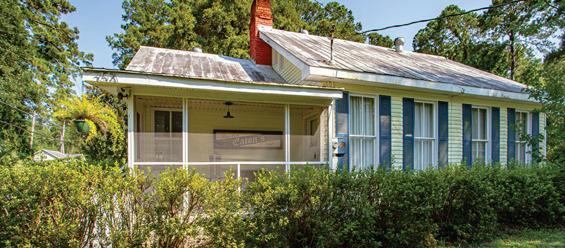
Nestled underneath the protective branches of Llewelyn, an Historic oak tree, is a charming farmhouse waiting for you. The home was build around 1900 and was moved to this location in 1932. The current owners have lovingly renovated and restored almost every inch of it. It is the best mix of beautiful oak floors and new kitchen with amazing backsplash. Both baths have been redone with direct access from three rooms. A separate bonus room upstairs could be a bedroom as well. Double sized living room with a fireplace and loads of natural light. Fruit trees loaded with their bounty. A huge 27’9” X 42’6” ft metal building for a workshop with garage doors. A separate room for storage. In addition, there is a separate barn storage building with 2 stories installed in 2013. $450,000
This is such a sweet unit. Located close to everything downtown. Has an off street dedicated parking space. Two floor unit. Living, dining, kitchen and half bath on first floor of unit and 2 bedrooms and 2 baths on the top floor. Very open floorplan. Perfect for students or full time living. You can park your car and walk to all the wonderful parks, squares, restaurants, etc. $430,000 431 Montgomery St HISTORIC DISTRICT
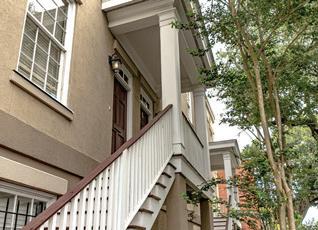
SOUTHBRIDGE
6349 Abercorn Street Savannah, GA 912.352.1222 • MyCBHomes.com
Lyn McCuen 912.224.0927
lyn@coldwellbanker.com www.lynmccuen.com @lynmccuen
Find me on:
TYBEE ISLAND
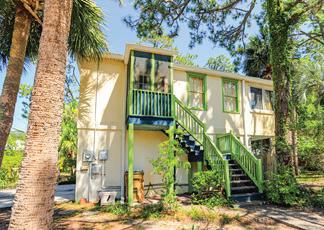
Developer dream at Tybee. Update or renovate this original Tybee home. And choose to add another wonderful home in the additional lot or make this whole double lot your Tybee paradise. This artsy home was built for Actor George Coburn and features tile from the original Desoto Hilton Hotel downtown. The shed in the yard was custom built by the owner and would make a great pool house. $800.000
103 12th Street
BURNSIDE ISLAND
Under Contract!Under Contract!
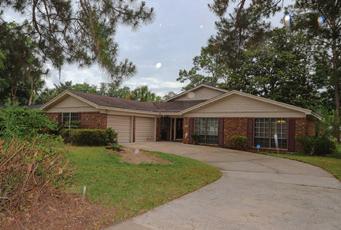
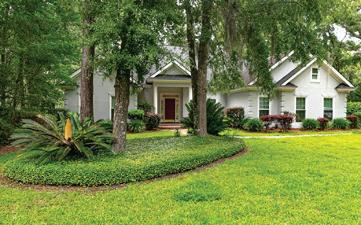
635 Suncrest 22 Myrtlewood Dr 387 Hunt Drive
WHITEMARSH TYBEE ISLAND
Sold!
103 Mapmaker Cv
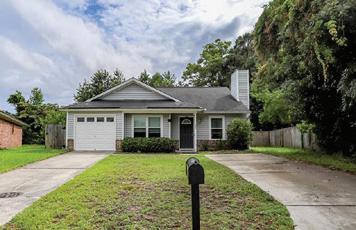
LAKEVIEW BURNSIDE
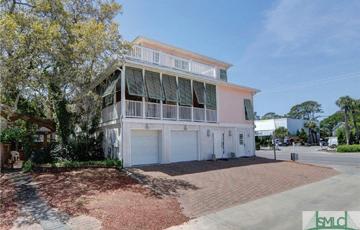
Sold!
1106 Butler Avenue
Sold! Sold! Sold!
